1.分组散点图
①xyplot()函数
> library(lattice) > xyplot(mpg~disp, #定义Y~X轴 + data=mtcars, + groups=cyl, #定义分组 + auto.key=list(corner=c(1,1))) #设置图例

②qplot()函数
> library(ggplot2) #加载包 > qplot(disp,mpg,data=mtcars, + col= as.factor(cyl)) #用颜色分组 > qplot(disp,mpg,data=mtcars, + shape=as.factor(cyl)) #用形状分组 > qplot(disp,mpg,data=mtcars, + size=as.factor(cyl)) #用大小分组
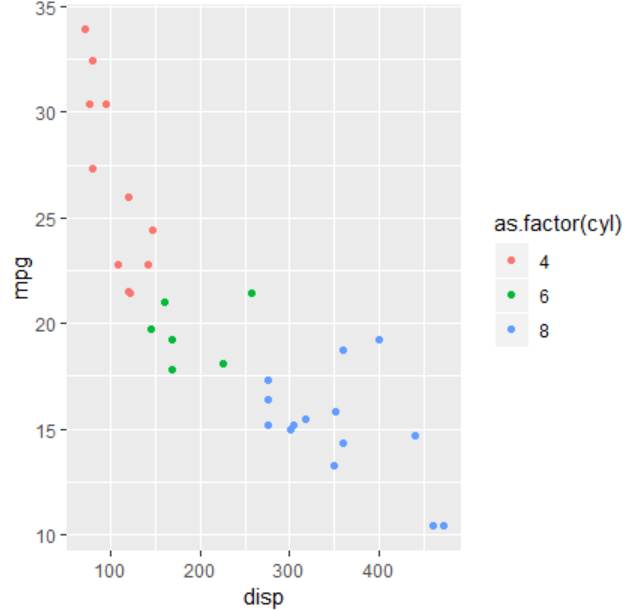
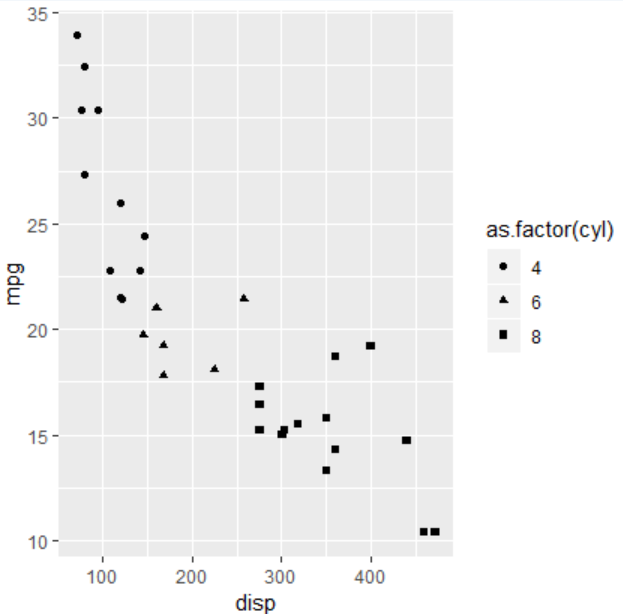

2.添加标识点 #text()函数
> health<-read.csv("HealthExpenditure.csv",header=TRUE)
> plot(health$Expenditure,health$Life_Expectancy,type="n") #定义X轴,Y轴,以无散点形式画图
> text(health$Expenditure,health$Life_Expectancy,health$Country) #以坐标添加城市名为标识点
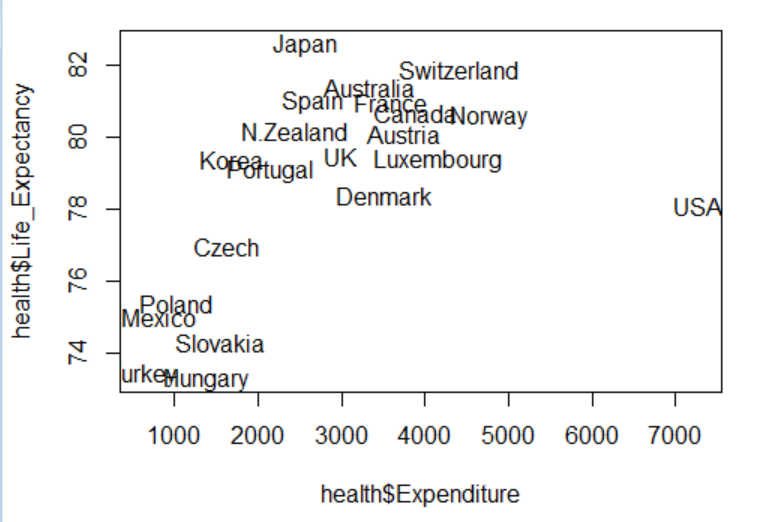
3.相关系数散点图
> panel.cor <- function(x, y, ...)
+ {
+ par(usr = c(0, 1, 0, 1)) #自定义每个坐标系范围
+ txt <- as.character(format(cor(x, #cor计算相关系数,as.character转换为字符串
+ y), digits=2)) #digits=2保留两位小数
+ text(0.5, 0.5, txt, cex = 6* #以(0.5,0.5)的坐标标识相关系数
+ abs(cor(x, y))) #数字大小为相关系数的六倍
+ }
> pairs(iris[1:4], #以iris数据集的1到4列两两组合画散点图
+ upper.panel=panel.cor) #右上方的三角形区域画相关系数代替散点图
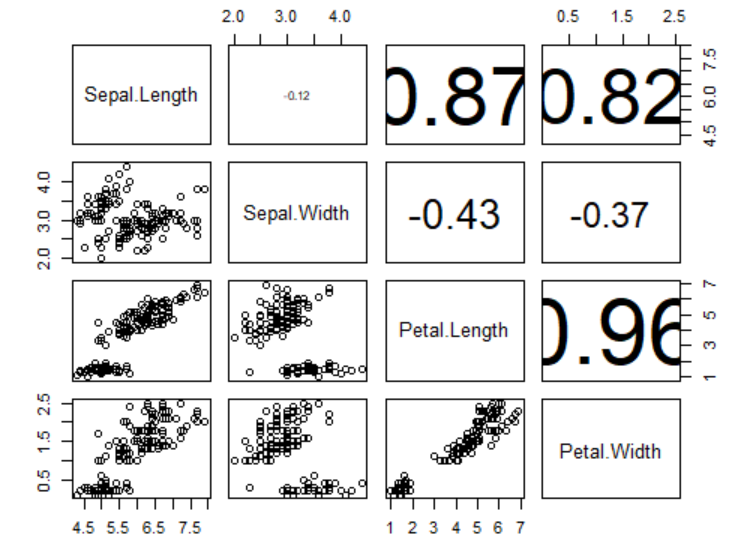
4.误差条 #arrows()函数
> plot(mpg~disp,data=mtcars) > arrows(x0=mtcars$disp, #设置起始点 + y0=mtcars$mpg*0.95, #设置向下的终点 + x1=mtcars$disp, + y1=mtcars$mpg*1.05, #设置向上的终点 + angle=90, #设置角度 + code=3, #设置样式 + length=0.04, #设置长度 + lwd=0.4) #设置宽度 > arrows(x0=mtcars$disp*0.95, #设置向左的终点 + y0=mtcars$mpg, #设置起始点 + x1=mtcars$disp*1.05, + y1=mtcars$mpg, + angle=90, + code=3, + length=0.04, + lwd=0.4)
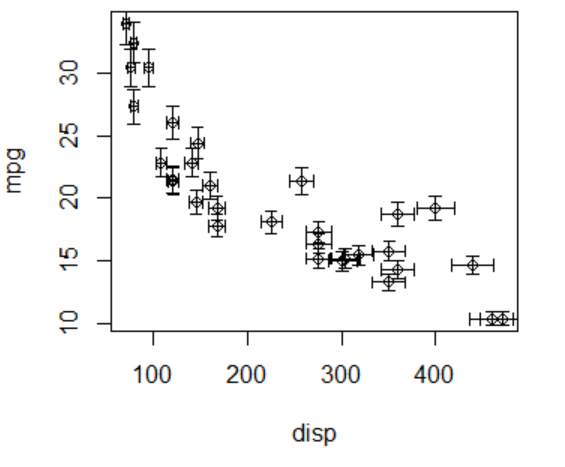
5.密集散点图 #jitter()函数:给向量加上少许噪音
> x <- rbinom(1000, 10, 0.25) #随机生成1000个均值为10*0.25=2.5的数 > y <- rbinom(1000, 10, 0.25) > plot(x,y) > plot(jitter(x), jitter(y))
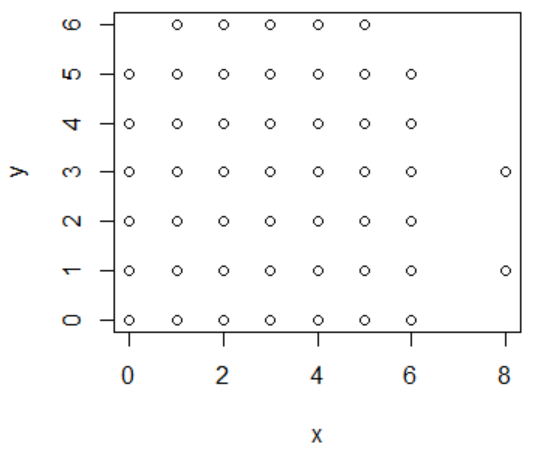
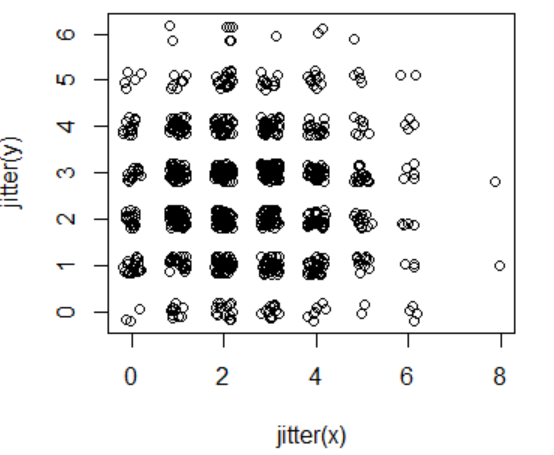
6.三维散点图 #scatterplot3d()函数
> library(scatterplot3d) > scatterplot3d(x=mtcars$wt, + y=mtcars$disp, + z=mtcars$mpg)

> scatterplot3d(mtcars$wt,mtcars$disp,mtcars$mpg, + pch=16, #实心散点 + highlight.3d=TRUE, #设置渐变颜色 + angle=20, #X和Y轴的夹角 + xlab="Weight", + ylab="Displacement", + zlab="Fuel Economy (mpg)", + type="h", #画散点垂直线 + main="Relationships between car specifications")
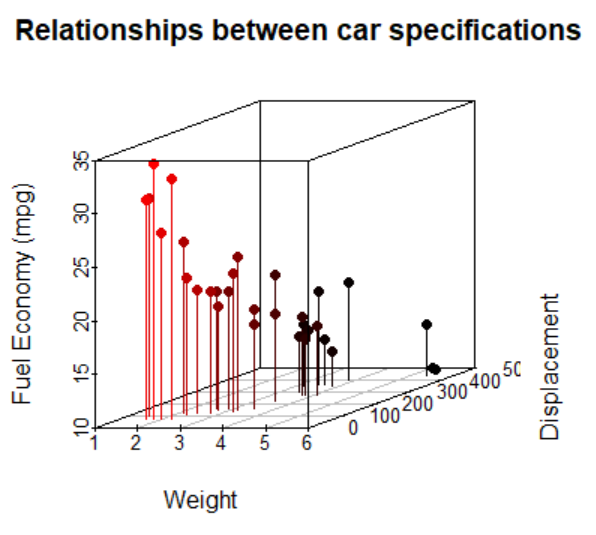
7.QQ图(检验数据是否服从正态分布)
> qqnorm(mtcars$mpg) #画散点 > qqline(mtcars$mpg) #画线(如果为一条直线,则数据服从正态分布)
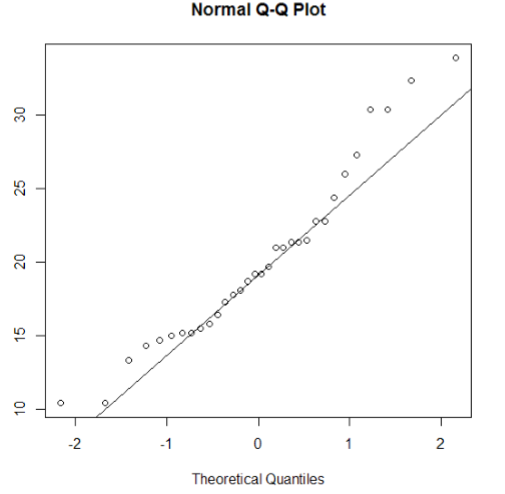
8.密度表示 #rug()函数
> metals<-read.csv("metals.csv")
> plot(Ba~Cu,data=metals,xlim=c(0,100)) #画散点图
> rug(metals$Cu) #密度表示(默认画在X轴方向)
> rug(metals$Ba,
+ side=2, #在Y轴方向表示
+ col="red",
+ ticksize=0.02) #设置长度
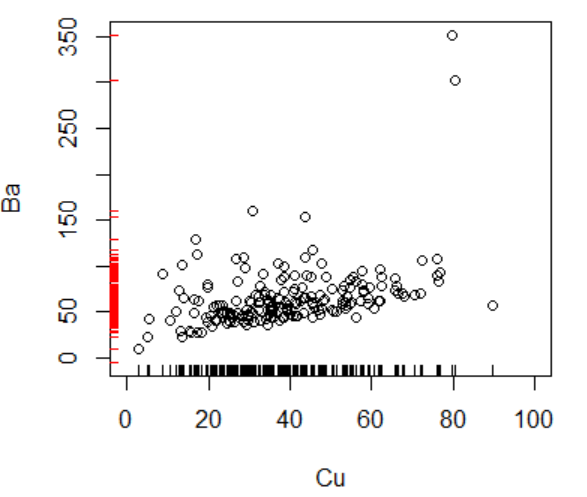
9.雾化散点图 #smoothScatter()函数
> n <- 10000 > x <- matrix(rnorm(n), ncol=2) > y <- matrix(rnorm(n, mean=3,sd=1.5), ncol=2) > smoothScatter(x,y)



